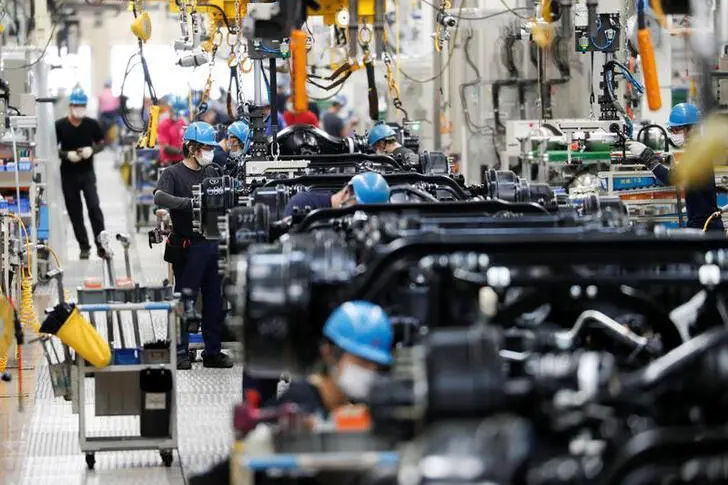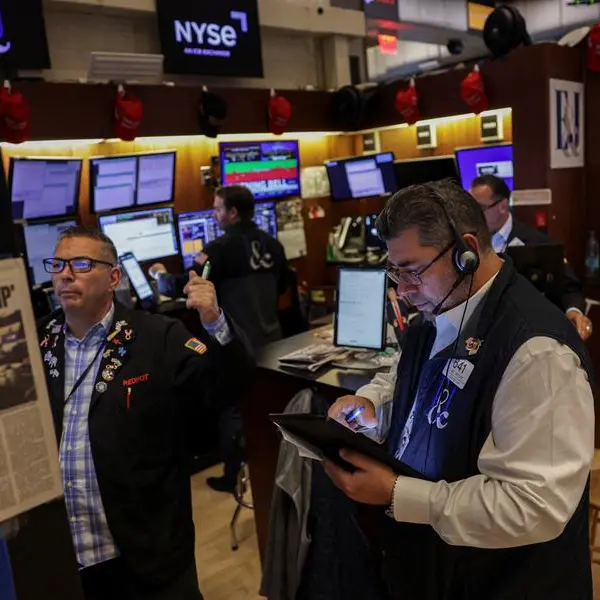PHOTO
Employees wearing protective face masks work on the automobile assembly line as the maker ramps up car production with new security and health measures as a step to resume fully operation, during the outbreak of the coronavirus disease (COVID-19), at Kawasaki factory of Mitsubishi Fuso Truck and Bus Corp., owned by Germany-based Daimler AG, in Kawasaki, south of Tokyo, Japan May 18, 2020. Issei Kato, Reuters Image used for illustrative purpose.
(John Kemp is a Reuters market analyst. The views expressed are his own.)
LONDON: U.S. manufacturing is already in recession based on the latest monthly report on business from the Institute for Supply Management (ISM) issued on Feb. 1:
* The ISM purchasing managers’ index slipped to 47.4 (16th percentile for all months since 1980) in January from 48.4 (19th percentile) in December and 57.6 (85th percentile) a year earlier.
* The composite index has fallen in 12 of the last 15 months to its lowest since the first wave of the pandemic in March and April 2020 and before that the recession in June 2009.
* The index has been below the 50-point threshold dividing expanding activity from a contraction every month since November and is lower than in the mid-cycle slowdowns in 2015/16 and 2011/12.
* The new orders component slumped to 42.5 (6th percentile) from 45.2 (8th percentile) in December and 57.9 (62nd percentile) a year ago, implying the downturn is likely to deepen over the next few months.
* Manufacturers reported the inflow of new business was lower (34%) rather than higher (15%) by a clear margin.
* Employment remains stronger than the other components of the survey, with the index at 50.6 (38th) in January down from 53.8 (68th percentile) a year earlier.
* More manufacturers reported cutting jobs (17%) than adding them (15%) but the overall picture was one in which labour demand was little changed.
* The resilience of manufacturing employment is likely attributable to “labour hoarding” as businesses only recently forced to hire expensively are reluctant to reduce headcount.
* In contrast to manufacturers in the Eurozone, temporarily lifted by lower energy prices, and China, lifted by the passing of the COVID wave, U.S. manufacturers felt the full impact of a cyclical slowdown.
So far, only the manufacturing sector is unambiguously in recession. The evidence for the much larger services sector, which is also more labour intensive and displays much more inertia, is less clear.
But if the manufacturing sector continues to contract, the rest of the economy is likely to follow into at least a significant mid-cycle slowdown and probably an outright recession.
Chartbook: US manufacturing activity
The weakness in the manufacturing surveys is consistent with the slack demand revealed in the national income accounts for the fourth quarter of 2022.
Real final sales to private domestic purchasers (FSPDP), which exclude volatile changes in inventories, trade and government spending, increased at an annualised rate of just 0.2% between October and December.
Real FSPDP grew at the slowest rate since the first wave of the pandemic and before that the 2008/09 recession, consistent with an economy close to or already in recession.
Household income and expenditure is also starting to falter as price increases continue to outstrip wages and other compensation.
Real personal income less current transfer payments (PILT), one of the time series used to identify the onset of recessions, increased by less than 0.3% in the twelve months to December.
The U.S. economy stalled over the last three months despite support from lower oil prices; with no underlying momentum, it is only one modest shock away from a significant cyclical slowdown centred on manufacturing becoming a full-blown recession.
Related columns:
- Recession now or later? Unenviable alternatives for 2023 (Reuters, January 26, 2023)
- U.S. manufacturing has probably entered recession (Reuters, January 19, 2023)
- U.S. container freight is shrinking (Reuters, November 16, 2022)
John Kemp is a Reuters market analyst. The views expressed are his own. (Editing by Barbara Lewis)





















